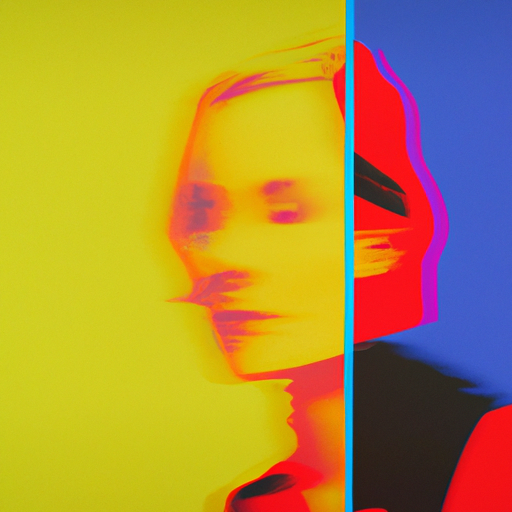
-
Table of Contents
- Motion Graphics Inspired by Kinetic Art
- Understanding Kinetic Art
- The Influence of Kinetic Art on Motion Graphics
- 1. Emphasis on Movement
- 2. Exploration of Space
- 3. Interactivity and User Engagement
- Case Studies: Motion Graphics Inspired by Kinetic Art
- 1. Nike Air Max Motion Graphics
- 2. Google Doodles
- The Future of Motion Graphics and Kinetic Art
- Conclusion
Motion Graphics Inspired by Kinetic Art

Motion graphics have become an integral part of our visual culture, captivating audiences with their dynamic and engaging nature. One of the key influences behind the evolution of motion graphics is kinetic art, a movement that emerged in the mid-20th century. Kinetic art, with its emphasis on movement and the exploration of space, has provided a rich source of inspiration for motion designers. In this article, we will explore the relationship between motion graphics and kinetic art, examining how the principles and techniques of kinetic art have shaped the world of motion design.
Understanding Kinetic Art
Kinetic art, also known as “art in motion,” emerged in the 1950s and 1960s as a response to the static nature of traditional art forms. Artists sought to break free from the confines of the canvas and explore movement as an essential element of their work. Kinetic art encompasses a wide range of mediums, including sculpture, installations, and even performance art.
One of the pioneers of kinetic art was Alexander Calder, whose mobiles and stabiles introduced movement into sculpture. Calder’s works, composed of suspended elements that respond to air currents, created a sense of constant motion and transformation. His innovative approach to sculpture laid the foundation for the exploration of movement in art.
The Influence of Kinetic Art on Motion Graphics
The principles and techniques of kinetic art have had a profound impact on the world of motion graphics. Motion designers have drawn inspiration from the dynamic and interactive nature of kinetic art, incorporating its principles into their work. Let’s explore some of the key ways in which kinetic art has influenced motion graphics:
1. Emphasis on Movement
Just like kinetic art, motion graphics place a strong emphasis on movement. Motion designers use animation techniques to bring static elements to life, creating a sense of motion and energy. By incorporating movement into their designs, motion graphics capture the viewer’s attention and create a more engaging visual experience.
For example, in a promotional video for a sports brand, motion designers may use animated typography to convey a sense of speed and dynamism. The letters can be animated to appear as if they are racing across the screen, creating a visually striking effect that captures the essence of the brand.
2. Exploration of Space
Kinetic art often explores the relationship between objects and the space they inhabit. Similarly, motion graphics designers consider the spatial arrangement of elements within a composition. They carefully position and animate objects to create a sense of depth and perspective.
For instance, in a motion graphics sequence for a documentary about space exploration, designers may use parallax scrolling to simulate the depth of space. By animating different layers at different speeds, they create a three-dimensional effect that immerses the viewer in the vastness of the cosmos.
3. Interactivity and User Engagement
One of the defining characteristics of kinetic art is its interactivity. Many kinetic artworks invite viewer participation, encouraging them to interact with the piece and become an active part of the experience. Motion graphics designers have embraced this concept by creating interactive and immersive experiences.
For example, in a website design for a museum, motion designers may incorporate interactive elements that respond to user input. By allowing users to control the movement and behavior of certain elements, designers create a personalized and engaging experience that encourages exploration and discovery.
Case Studies: Motion Graphics Inspired by Kinetic Art
Let’s take a closer look at some real-world examples of motion graphics that have been directly inspired by kinetic art:
1. Nike Air Max Motion Graphics
In a promotional campaign for Nike’s Air Max shoes, motion designers drew inspiration from Alexander Calder’s mobiles. The motion graphics featured floating shoe elements that responded to the viewer’s movements, creating an interactive and dynamic experience. The campaign successfully captured the essence of the shoes’ lightweight and flexible design.
2. Google Doodles
Google’s iconic doodles often incorporate motion graphics inspired by kinetic art. These animated logos celebrate significant events and personalities, bringing them to life through movement. The doodles engage users by inviting them to interact with the animation, creating a playful and immersive experience.
The Future of Motion Graphics and Kinetic Art
The relationship between motion graphics and kinetic art continues to evolve, with new technologies and techniques pushing the boundaries of what is possible. As virtual reality (VR) and augmented reality (AR) become more prevalent, motion designers are exploring ways to incorporate kinetic art principles into immersive experiences.
For example, in VR experiences, motion designers can create interactive environments where users can explore and interact with kinetic sculptures in a virtual space. This fusion of motion graphics and kinetic art opens up new possibilities for storytelling and user engagement.
Conclusion
Motion graphics, inspired by the principles and techniques of kinetic art, have transformed the way we communicate and engage with visual content. The emphasis on movement, exploration of space, and interactivity has made motion graphics a powerful tool for capturing attention and conveying messages effectively.
As motion designers continue to draw inspiration from kinetic art, we can expect to see even more innovative and captivating motion graphics in the future. By embracing the dynamic nature of kinetic art, motion designers are pushing the boundaries of visual storytelling and creating immersive experiences that captivate and inspire audiences.
